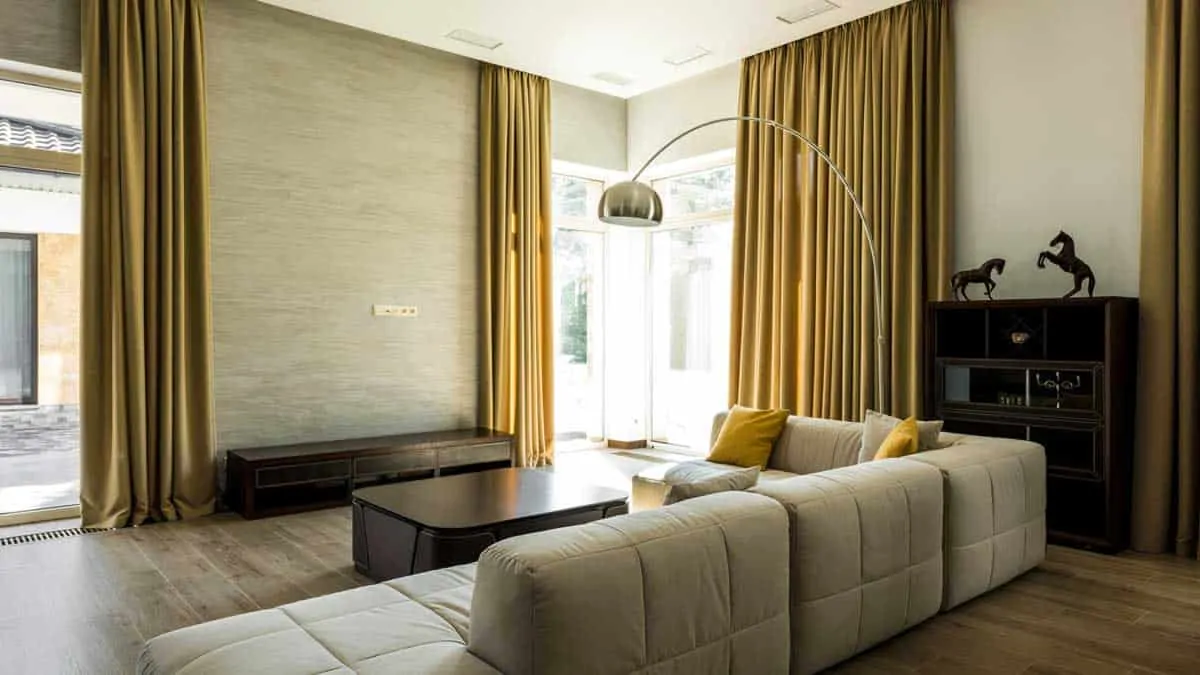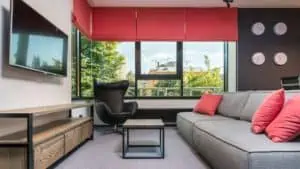You’ve probably used all of these words interchangeably. Most of us have. But then if you are shopping for them, you’ve got to know what you’re getting and why you’re getting it. So in commonday language, you keep calling the things that cover windows whatever you want to call them. But if you’re going shopping for an upgrade to the house, here are the terms that you should use:
Curtains and Drapes
These are the giant pieces of fabric that swoop and swish over windows. In artistic films, the windows are open and the curtains are billowing a bit. Curtains come in a ton of different fabrics, colors, and patterns which can all play a huge role in the style of the room as one of the main accents for the room. Curtains are generally on the lighter side of the fabric equation, while drapes are on the heavier and longer side. The words drapes and curtains are often used interchangeably, but there are some technical differences.
Curtains
Curtains are usually a thinner fabric which is not lined, and so are most likely to be of the sheer and semi-sheer varieties. Drapes are heavy and darkening. On the other side of the spectrum, there are sheer and semi-sheer curtains. They allow you to get the most amount of natural light into the room without getting direct sunlight. They also maximize airflow if the window is open. Think of the sheer and semi-sheer curtains as allowing your room to remain attached to the outdoors while still separated from the harshest light and air. Right in the middle are room darkening curtains. Once we get past darkening curtains you will end up in the drapes category.
Drapes
Unlike curtains (most curtains), drapes have what is usually a heavy fabric lining that helps to block out additional light. They are generally heavier and a lot stiffer than curtains. Drapes are a common choice for a regal dining room or a bedroom.
Some fabric is lighter and can allow some light to pass through, while other fabric is thick and blocks out light. “Blackout” curtains are thick fabric that blocks all light from getting into the room from outside when closed. “Max blackout” curtains block even more light and are a popular choice for bedrooms. They can reduce air drafts getting into the room, can trap pollutants from outside, and can make sure that you can get to sleep even if you have a pesky streetlight or early sunrise that messes with your schedule.
Shades
Shades are a cross between blinds and curtains. They are usually built to treat a window without view to removing most or all of the light. They allow a lot of light to enter the room and can usually be adjusted vertically to an exact height which can block direct sunlight while allowing the maximum amount of light into the room.
Shades are built out of fabric and they come in a variety of sizes that are built to fit the frame of the window. Usually, shades roll down and can be adjusted down and up. There is usually a lifting mechanism which is at the top of the window that allows the shades to roll and unroll.
There are many different styles of shades, but the basic premise is a single piece of fabric that cascades vertically to fit over the window. Shades can be permeable which means that they allow more light into the room, and there are also styles that block out more light rather than less. Roman shades are a type of style which pull up and down, and are very functional and easy to use. There are also balloon shades which expand upwards, and there are tied shades which must be hand tied when you want them to remain up. Roman shades are a popular choice for shades that are often opened and closed, while balloon shades and tied shades are great choices for shades that will often be either up or down, but not both.
Blinds
It is actually somewhat rare that drapes and curtains will be attached to a window without the addition of some blinds beneath them. Blinds are a common window dressing in houses, which are usually made of different slats of material that can open and close like sheers. They generally have multiple functionalities, both opening and closing the blinds themselves and then raising or lowering the blinds as a whole.
Blinds can be rather cheap, made of plastic or vinyl, but they can also be more expensive, made out of wood or even aluminum. There are plenty of different styles of blinds. The standard blind is about 2-inches wide, which is a Venetian blind. Other blinds are considered mini, and are an inch or even a half inch wide. Blinds generally have the size of the window frame in which they are located, without much room on either side of the blind. They are usually a bit longer than the window sill and provide plenty of length to block out light.
What do Curtains, Drapes, Shades and Blinds do for a room?
Shades and blinds provide a lot of functionality without being able to block out the maximum amount of light. Curtains are fairly easy to open and close, but are also not built to block out light and can be tricky to get to allow the ideal amount of light. Drapes are a bit of an all or nothing scenario. They don’t provide the nuance that blinds provide, but they can block most of the light out of a room if you need them to.
Drapes and curtains have a very fancy, regal appearance, while shades and blinds can make a room look modern and minimalistic. Blinds usually bring a solid color, while shades, drapes, and curtains can have any number of colors or patterns. The fabric of a curtain and drape absorbs sound and makes the room feel a bit softer, while blinds can be sharper and make the room feel like it has more energy and excitement.





